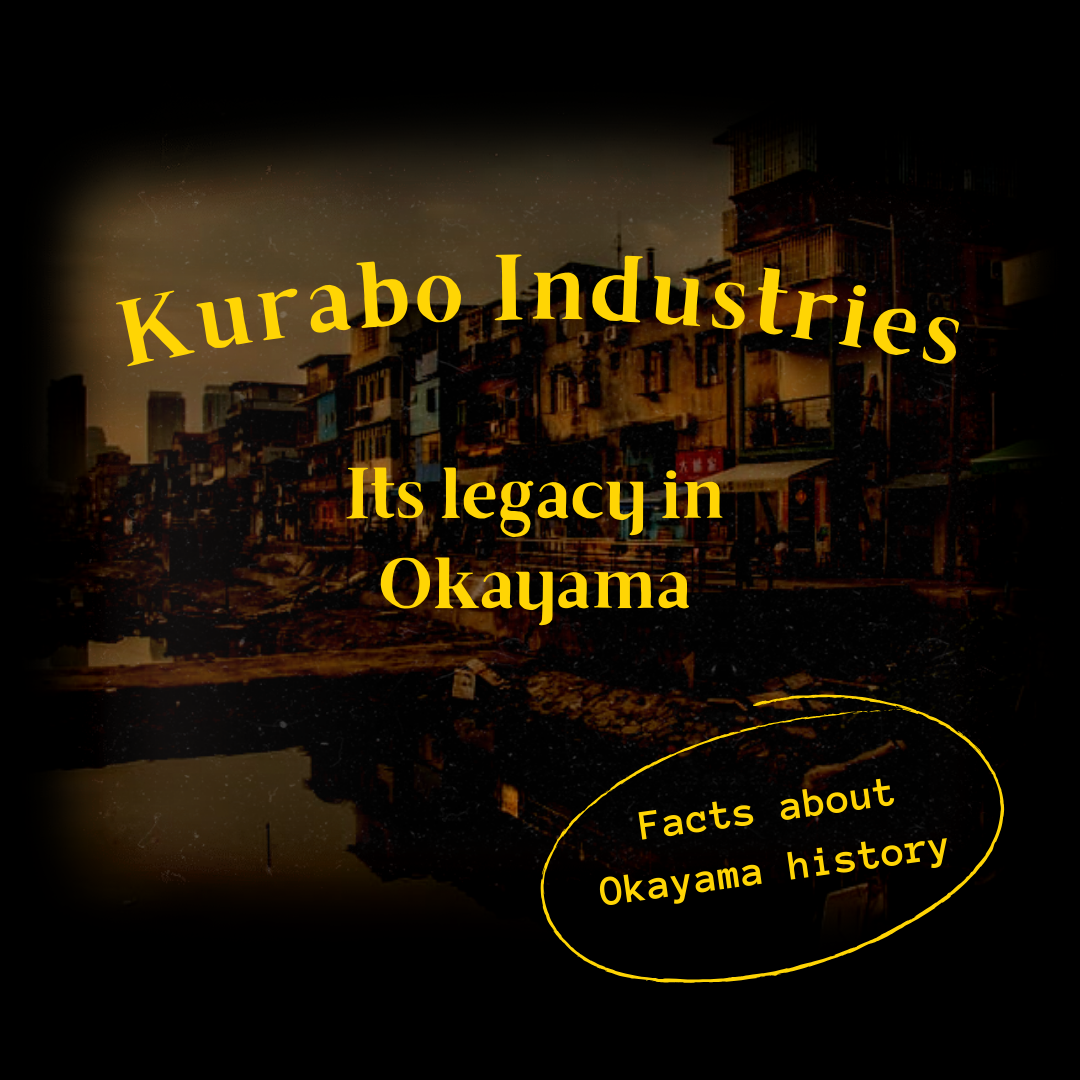🏭 Kurabo Industries: A Legacy of Innovation and Community Impact in Okayama
Founded in 1888 in the heart of Kurashiki, Okayama, Kurabo Industries is more than just a company, it’s a symbol of progress, social responsibility and innovation. Back in the late 19th century, Kurashiki had little to offer industrially aside from cotton farming. That changed when a group of passionate young men, backed by the visionary Ohara family, launched what would become one of Japan’s pioneering textile companies. 💸
—————————————-
🌱 Investing in People — Since the Beginning
Kurabo’s commitment to community began right at the factory gates. In 1902, an elementary school was established within the spinning mill’s employee lodgings, allowing workers and their children access to basic education, which was an extremely rare opportunity at the time.
Even as harsh labor conditions were common elsewhere, Kurabo created family housing, a medical clinic, and a sewing room right inside the factory grounds. Particularly:
-
🏡 Family housing was built inside the factory grounds, allowing workers to live close to their jobs while maintaining family bonds.
-
⚕️ A medical clinic was made available to address everyday health concerns.
-
🧵 A sewing room provided both work and skill-building opportunities, especially for women.
These steps was just revolutionary back then as they reflected Kurabo’s deep-rooted values of employee welfare and personal development.
⚡ Lighting Up
Kurabo’s impact reached far beyond its own factory walls. In 1909, it helped establish Kurashiki Dento, an electric power company built to serve not just the factory but the entire region.
This visionary step brought electricity to homes, businesses, and public spaces — a monumental development that turned Kurashiki into a modern industrial town. Today, this legacy lives on through Chugoku Electric Power, one of Japan’s major power providers.
🔬 Advancing Labor Science
As the business grew, so did Kurabo’s sense of responsibility. In 1921, the company established the Kurashiki Labor Science Institute 🧪, the first of its kind in Japan. Its mission was clear:
To scientifically study labor conditions, reduce risks, and improve physical and mental health at the workplace.
Now known as the Ohara Memorial Institute for Science of Labor, it has become a national leader in workplace research, setting the standard for employee safety and ergonomics long before such practices were commonplace.
🏥 Caring for Employees and Citizens
Healthcare access was limited in early 20th-century Japan, especially in rural areas like Kurashiki. Recognizing this urgent need, Kurabo built the Kurabo Central Hospital in 1923.
Notably, the hospital wasn’t just for employees but also served the entire local population, filling a critical healthcare gap. Today, this hospital is known as Kurashiki Central Hospital, one of the most respected medical institutions in the region. Kurabo’s model showed how businesses can directly improve quality of life for the entire community, not just their own workforce.
🔄 Innovation That Never Stops
Over 130 years later, Kurabo is still pushing boundaries. While it began in textiles, the company has since expanded into a diverse range of industries:
-
🧵 Textiles
-
🧪 Chemicals
-
🍪 Food processing
-
🏗️ Industrial machinery and materials
Yet its values haven’t changed. Kurabo continues to invest in culture, education, and the arts, most notably by supporting the Ohara Museum of Art 🖼️, Japan’s first private museum of Western art.
This, once again, reflects Kurabo’s enduring belief that a truly successful company doesn’t just create products — it creates culture and nurtures the soul of the community.





